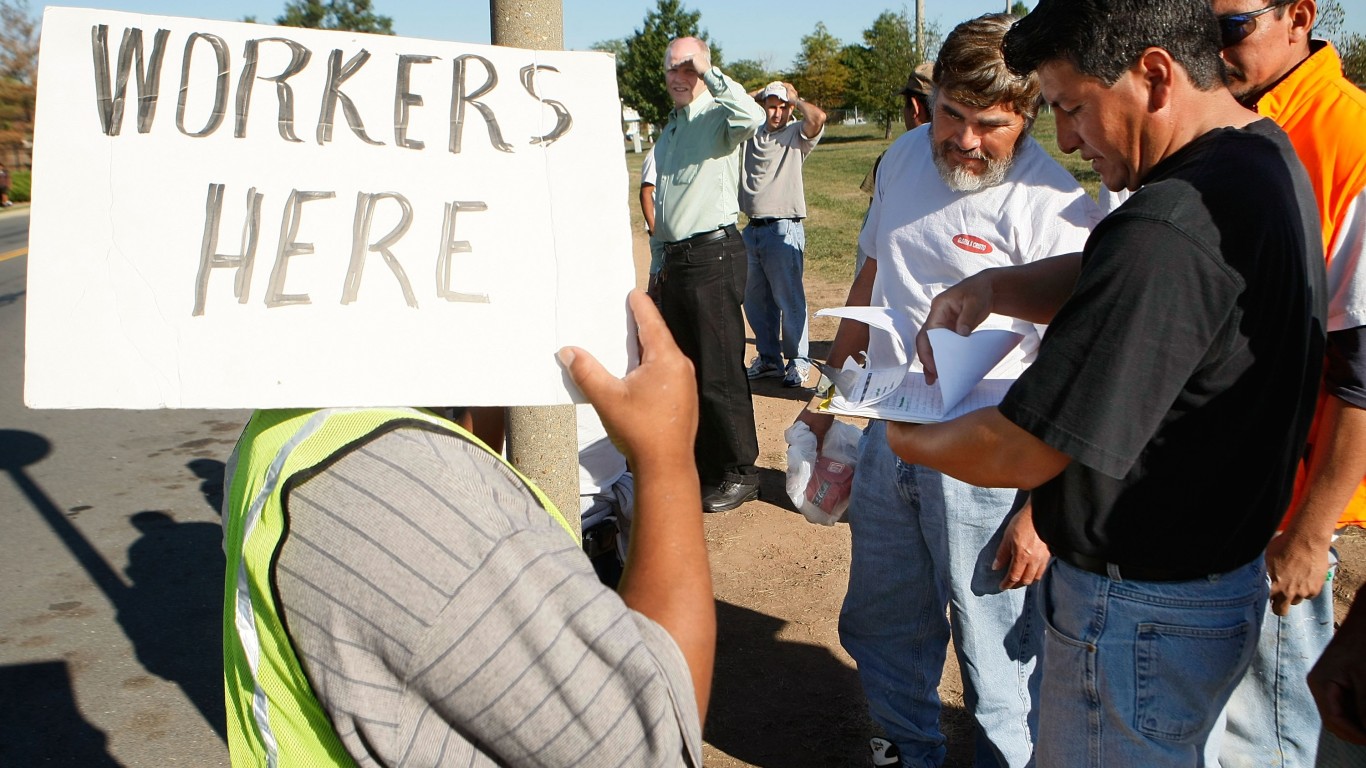

The practice of laying off workers whenever the company has a bad day, or outsourcing jobs overseas, are both relatively recent developments in the modern world, all thanks to relaxed labor laws and the increasing focus of our culture on a selfish me-first attitude. This priority of profits above everything has led to the destruction of cities, families, lives, and the environment. While we could go on forever about the damage rampant, unrestrained capitalism has done to our world, we will focus instead on just ten American cities that were destroyed just by outsourcing jobs.
Why Are We Talking About This?
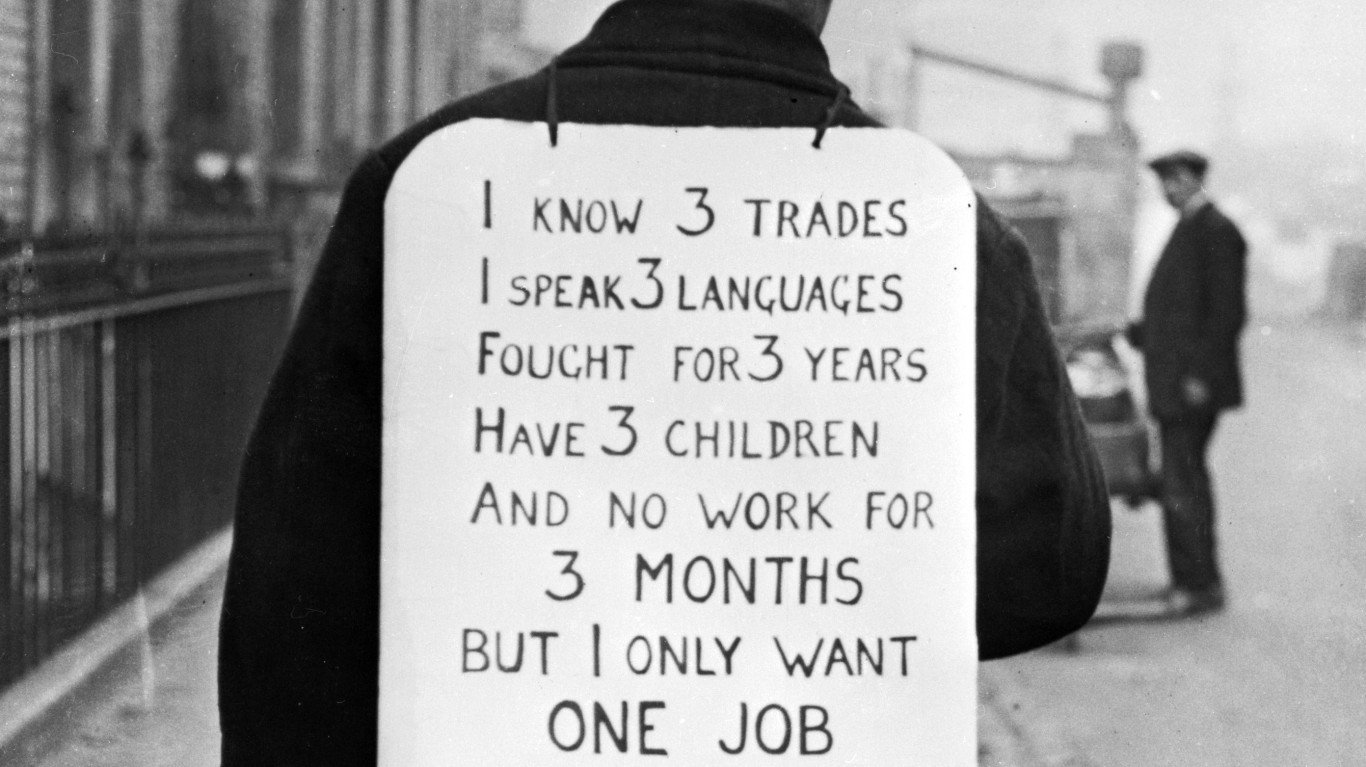
Corporations are not your friends. They never have been and never will be. They will always prioritize money over the well-being and lives of their employees. Yet humans are forgetful creatures, and we sometimes forget the worst things in our history, leading us to repeat the same mistakes over and over again. As we hear the rich and powerful advocate for the loosening of labor laws and union protections, we feel the need to remind some of the damage that has been done when companies can do whatever they want.
The Background on Outsourcing

Outsourcing, and deindustrialization, these are the buzzwords that residents of U.S. areas like the steel and rust belts curse while living among abandoned manufacturing plants and trying to repair their towns. As capitalism grows, it seems that the trend of offshoring jobs to cheaper countries only protects the bottom line, but leaves behind American Blue- and White-collar workers. The decline of manufacturing started happening in the 1970s as steel and other manufactured goods became cheaper to import from other countries than to produce in the U.S.
It all culminated with the passing of The North American Free Trade Agreement (NAFTA) in 1993. This emboldened companies to move their labor elsewhere, resulting in stagnant wages, job losses, and upward redistribution of income and political power.
In the first two decades following the signing of NAFTA, America experienced a loss of around 700,000 jobs. Because these jobs are highly specialized, many of the workers laid off suffered a permanent loss of income as they settled into lower-skilled jobs. The threat of companies moving to other countries also afforded a great loss to employees’ bargaining and negotiation powers, making wages stagnant for employees who got to keep their jobs.
Between the years 2000 and 2007, over 50,000 manufacturing plants closed affecting over 3.5 million people. It’s estimated by the Department of Commerce that since the passing of NAFTA, U.S. multinational corporations hired 2.4 million overseas workers after firing more than 2.9 million American workers.
Outsourcing and deindustrialization are not things that ever stopped in the manufacturing industry. Outsourcing has now migrated from the manufacturing sector to most other sectors in the form of customer service, bookkeeping, management, and more.
#10 Youngstown, Ohio

Youngstown is a place where manufacturing companies have come and gone time and time again, resulting in repeated destruction of the local economy. Since the 1980s, Youngstown has lost over 50,000 total jobs in steel and steel-related industries. The most recent corporations to jump ship were General Motors (NYSE:GM) and Lordstown Motors.
General Motors closed its nearby plant in Lordstown, among four other North American plants in 2019. The GM plant employed 1,600 workers and had been in operation for 52 years. In the plant’s prime in the 1990s, it employed well over 10,000 Youngstown residents. After the shutdown, General Motors sold the plant to Lordstown Motors, a now-failed electric truck company, that pledged to create more than 400 jobs in the first year. The company received $4.5 million in grants from JobsOhio, more than $1 million from a federal pandemic loan, and a state tax credit of around $20 million. Lordstown Motors declared bankruptcy in 2023, after receiving all the financial incentives.
As smaller manufacturers are now trying to fill the void that the steel boom left, Youngstown is experiencing high crime rates, urban decay, increasing poverty levels, and a shrinking population. The town has not given up hope, though. In recent years, it started using tax abatements to attract new businesses including a jail, warehouses, and computer tech companies to rebuild the economy.
#9 Galesburg, Illinois

Galesburg was once the home of a successful Maytag refrigerator plant. With the plant’s closure in 2004 which caused a job loss of more than 2,000 people, the population dropped from 33,000 to today’s 26,000.
Maytag moved its production to Reynosa, Mexico which caused a huge oversaturation of the local job market in Galesburg. In Galesburg, Maytag paid their employees $15.14 per hour. When it moved to Mexico, that hourly rate dropped drastically to $1.10 per hour. This caused many of the workers who didn’t relocate for better opportunities to settle for much lower-paying jobs.
The abandoned mile-long Maytag factory still sits empty and partially decayed in Galesburg as a reminder to the community of how the middle class used to thrive in the area.
#8 Dayton, Ohio

Dayton was once home to the first modern factory system. Its founder, John H. Patterson founded NCR and was the inventor of the cash register. Besides NCR, Dayton was once also home to Mead Paper, Delphi, Reynolds and Reynolds, and General Motors. There were also around 600 machine shops in the town in the 1980s.
Since the 1990s, 50% of the machine shops closed, and Dayton has lost over 15,000 manufacturing jobs. The once thriving population of 262,000 in 1960 is now only 134,000 with a declining rate of -0.57% annually.
Dayton has a poverty rate of 27.5% and as manufacturing shut down, the drug trade grew. Dayton was a large victim of the ongoing opioid epidemic. In 2022, there were 4,915 drug overdose deaths.
#7 Danville, Virginia
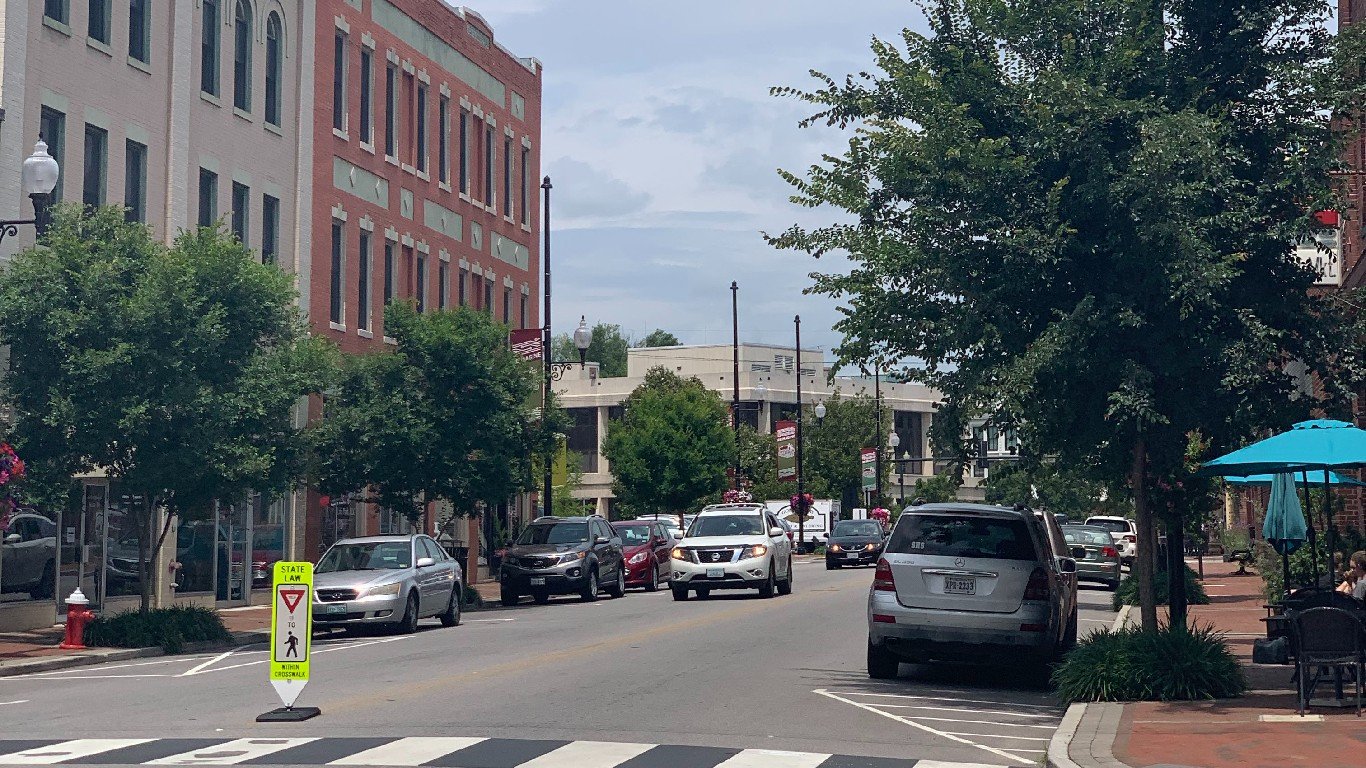
Danville is a victim of the results of outsourcing of U.S. textile plants. The Danville River Mill was the largest textile firm in the South for several decades and was the main employer in Danville for about a century. At one point it employed 14,000 of Danville’s 40,000 residents.
The Danville River Mill closed its doors in 2006, with outsourcing to foreign countries being much cheaper for the company than keeping it in-house. Today, the population of 41,881 is declining by -0.4% annually with a poverty rate of 25.3%. The town hopes to revitalize its economy by transforming the abandoned mills into new businesses.
#6 Empire, Nevada
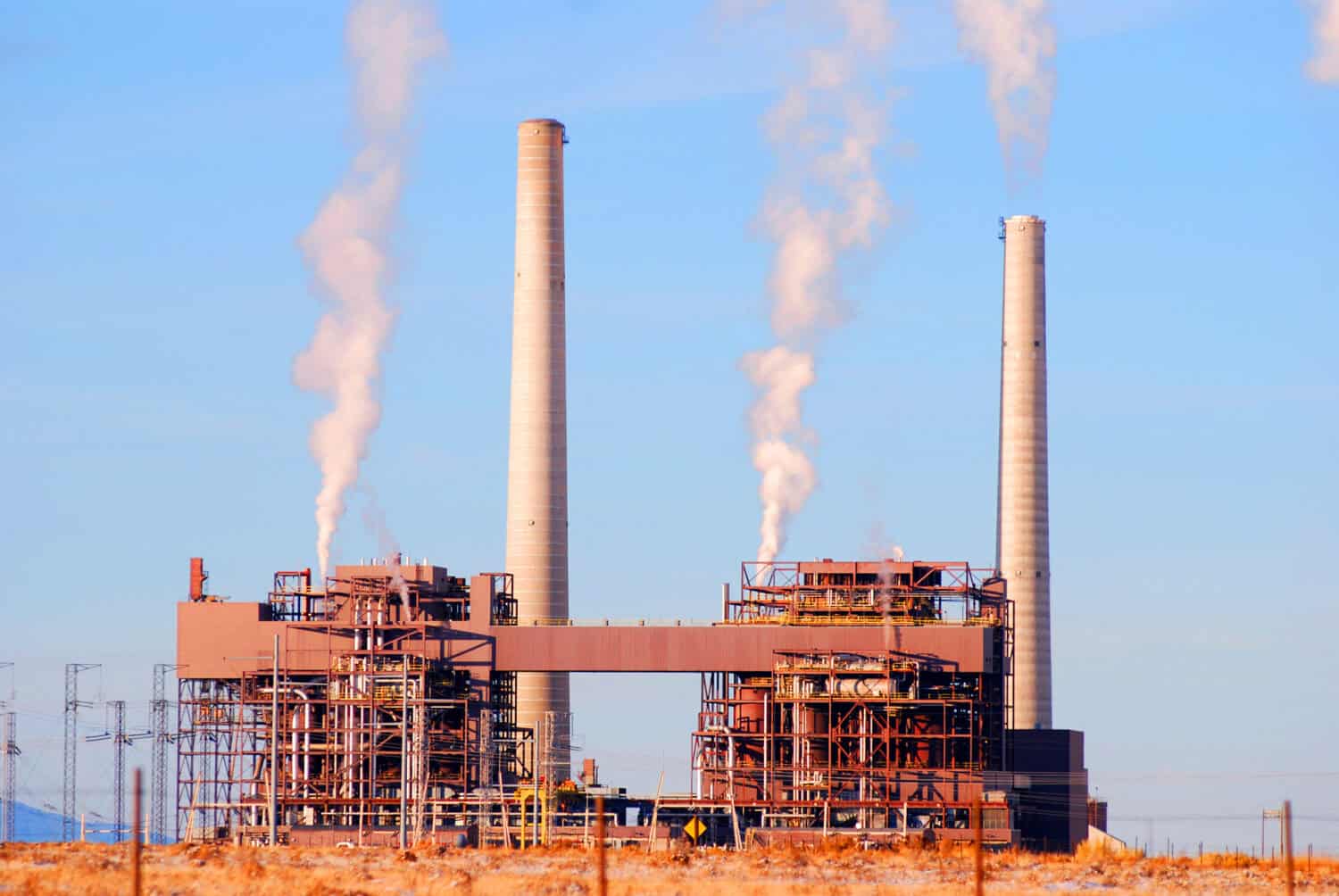
Empire started as a humble mining town in 1923. By 1948, U.S. Gypsum bought up all of the mines and land rights. This corporation town started with a population of around 750. The company supplied rental housing, a convenience store, a gas station, a small airport, a church, and even a 9-hole golf course among other amenities to its population of mostly workers and their families.
U.S. Gypsum closed its Empire Sheetrock Plant in 2011 and eliminated its remaining 95 jobs due to outsourcing most of its production to Argentina, Peru, Mexico, and Canada. The population quickly plummeted to 67 people. The population dropped further to only 20 residents in 2016 when the entire town was sold to Empire Mining.
Today, the tiny town is on the rebound, known as the “Gateway to Burning Man,” with a population of 174 and a poverty rate of 0%. Its single convenience store sells around $8,000 in potato chips each year during Burning Man and around 4,500 bags of ice. Empire is the last hint of civilization that Burners pass before arriving at the annual event.
#5 Toledo, Ohio

Toledo is a town that has suffered from the “Wal-Mart Effect,” (NYSE:WMT). Along with Home Depot (NYSE:HD), another outsourcing chain that opened in the town, the two mega-corporations ran small businesses into the ground. At the town’s peak in 1970, it was a bustling community of 383,000 people. Today, the population is only 262,000 with a poverty rate of 24.5%.
This negative effect on the town was once again highlighted in 2009, when The Northwest Ohio Building and Construction Trades Council encouraged a mass boycott of Home Depot throughout Ohio and picketed many locations, including the Toledo location. The boycott started when Home Depot announced the construction of a distribution center in the area that would be built by cheaper, out-of-state, non-unionized workers instead of the highly qualified, laid-off workers already in the area.
#4 Nowata, Oklahoma
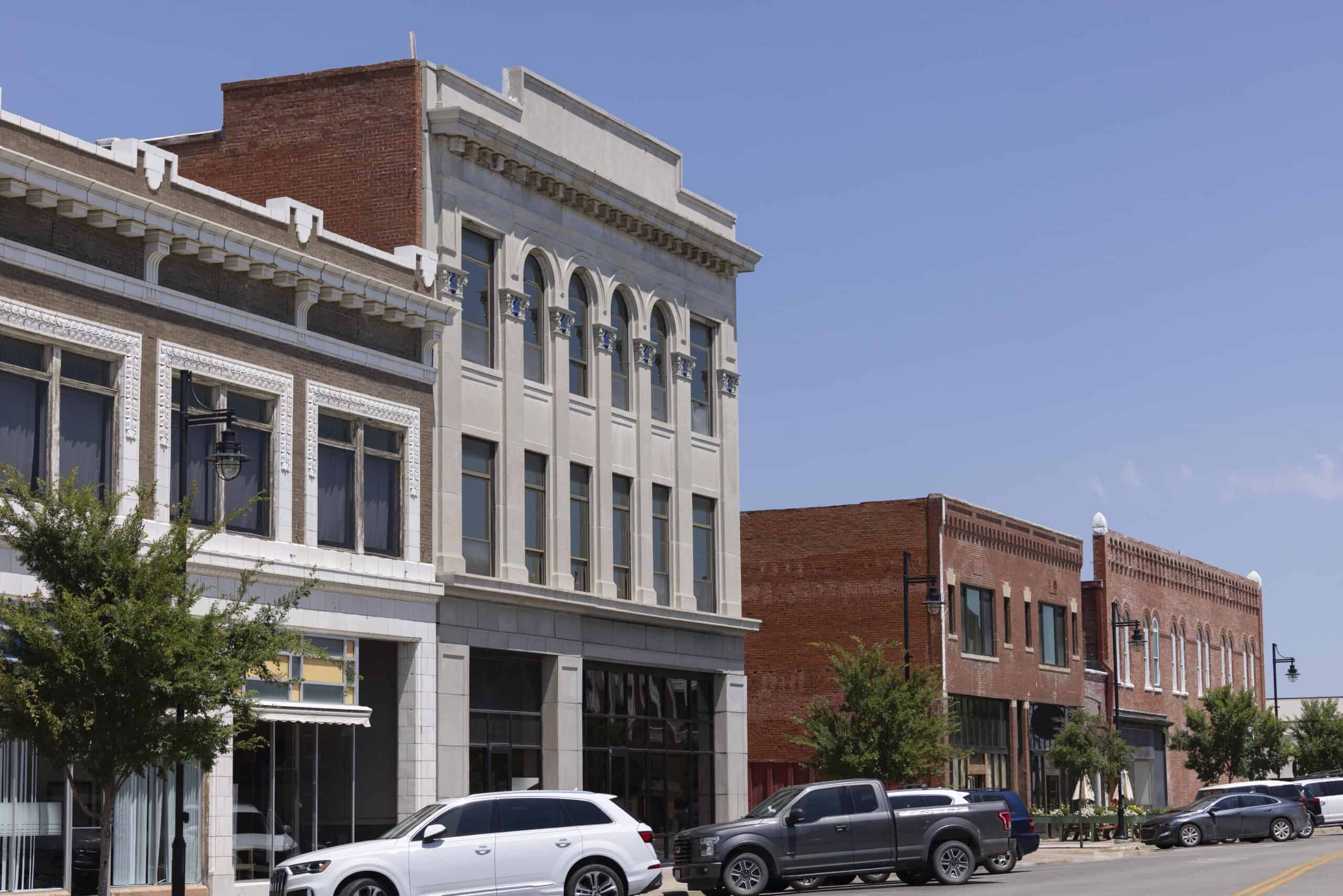
Nowata is another victim of the “Wal-Mart effect,” a phenomenon that has laid waste to many small rural towns. Wal-Mart consumes towns by moving into a small town that is already meeting the community’s demand for goods, undercutting small business competitors’ prices until they go out of business, and then raising their prices while simultaneously underpaying its employees.
Because Wal-Mart outsources manufacturing and production jobs globally and relies on government subsidies to continue operations, much of the tax money that would be produced in the towns simply vanishes.
Nowata is no exception. Wal-Mart first opened in Nowata in 1982 and then abruptly closed in 1994. During its decade-long tenure in the small town, half of the small businesses went under and the population shrank from 4,300 to 3,900. Wal-Mart closed its doors in the town only to build a super-center a couple of towns over, laying off all its Nowata employees.
Today, Nowata has a population of 3,618 people with a poverty rate of 20.98%.
#3 Weirton, West Virginia
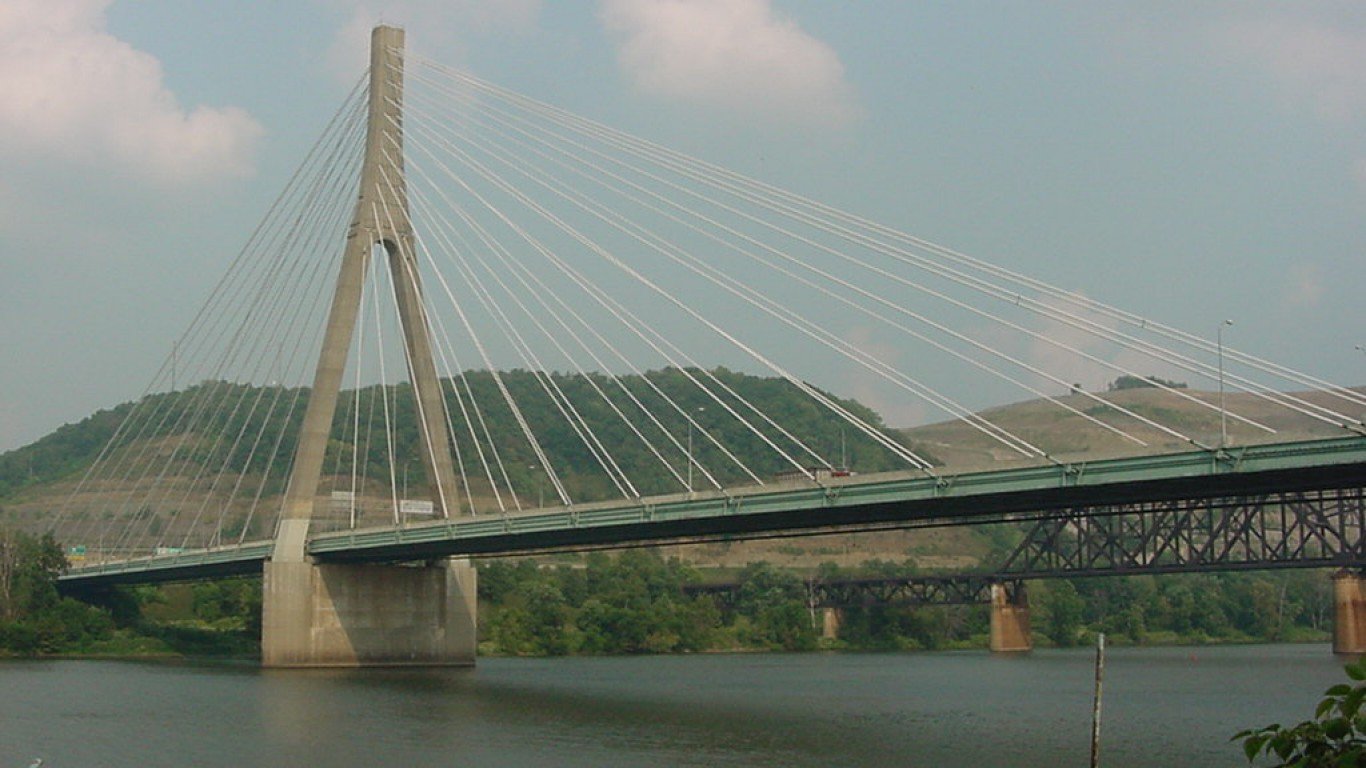
Weirton was once one of the “steel capitals of America.” Weirton started as a company town in 1909 and experienced significant growth by 1924. Weirton Steel was one of the biggest single private employers in the country and at one point, the largest tax-payer in West Virginia.
At its peak in 1960, Weirton supported the town of 28,200 people. Over the next few decades, as the steel boom died down, Weirton Steel tried to save itself by becoming the largest employee-owned company in the nation in 1984. The company shares became increasingly diluted over the years until after the passing of NAFTA.
NAFTA was the solution for Weirton’s continued decline. In 1997, Weirton Steel formed a venture with India-based company Balli Group plc. Along with a few other international ventures, much production was outsourced to India, causing the Weirton Steel Mill to close. After NAFTA, 95% of the jobs in Weirton disappeared. Today, the current population is 17,900 with a poverty rate of 11.65%.
#2 Monessen, Pennsylvania
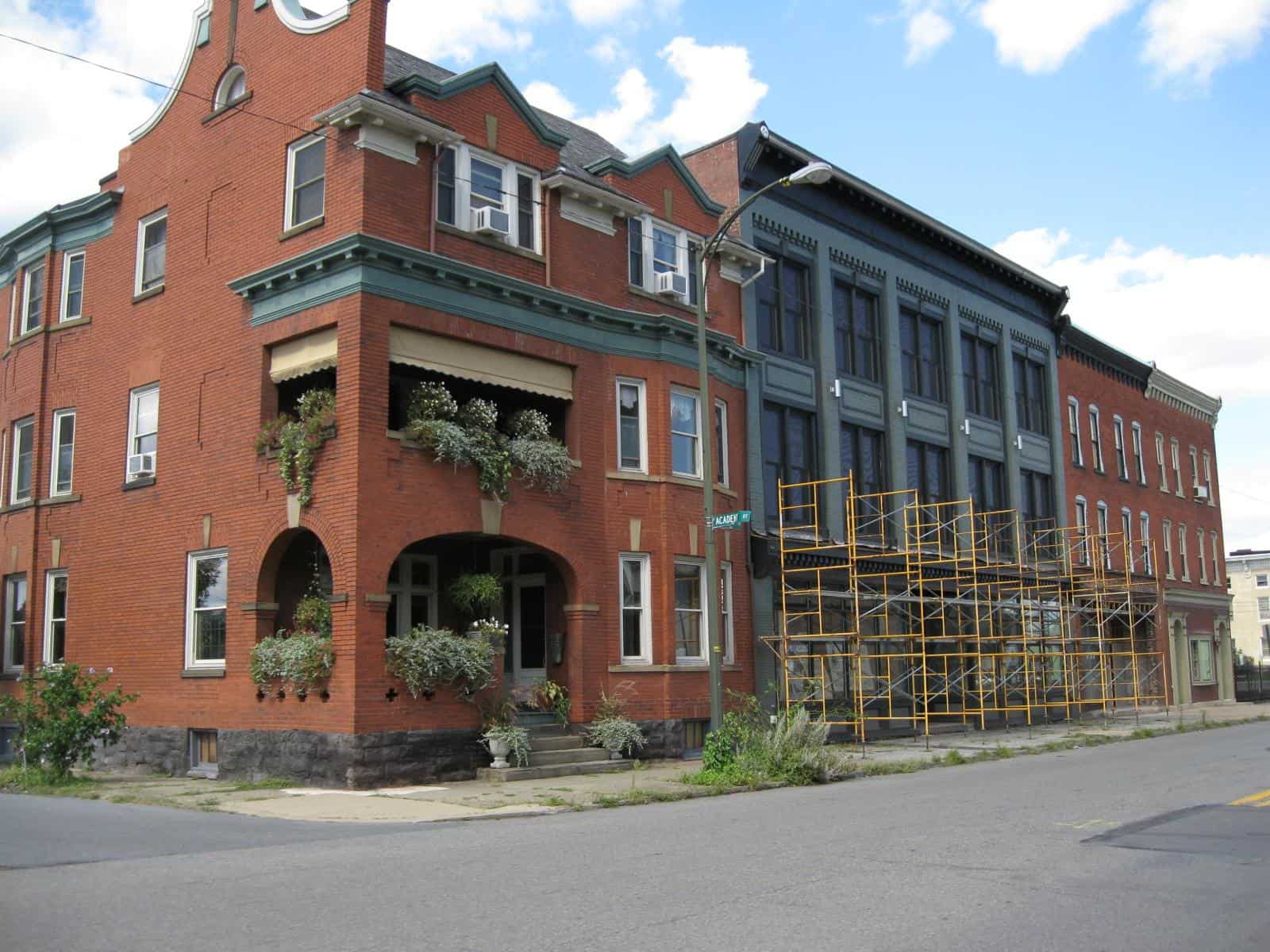
Wheeling-Pittsburg Steel Corp was once one of the biggest employers in Monessen from the 1940s to the mid-1980s. Wheeling-Pittsburg owned 13 manufacturing plants between West Virginia and Ohio. It produces rolled steel, semi-finished, hot-rolled steel, and railroad tracks among its steel output.
The plant in Monessen supported the town’s population of 20,300 at the company’s peak in 1940. There were nine elementary schools and a thriving downtown area with several shops and businesses, and the town seemed hopeful for the future of steel.
With imported steel becoming cheaper and cheaper over time, Wheeling-Pittsburg Steel Corp closed its Monessen location in 1987, laying off the remaining 1,000 of its once 11,000 employees and focusing its production on other plants. Today, there is only one elementary school, a population of 6,667, and a poverty rate of 16.48%.
#1 Flint, Michigan
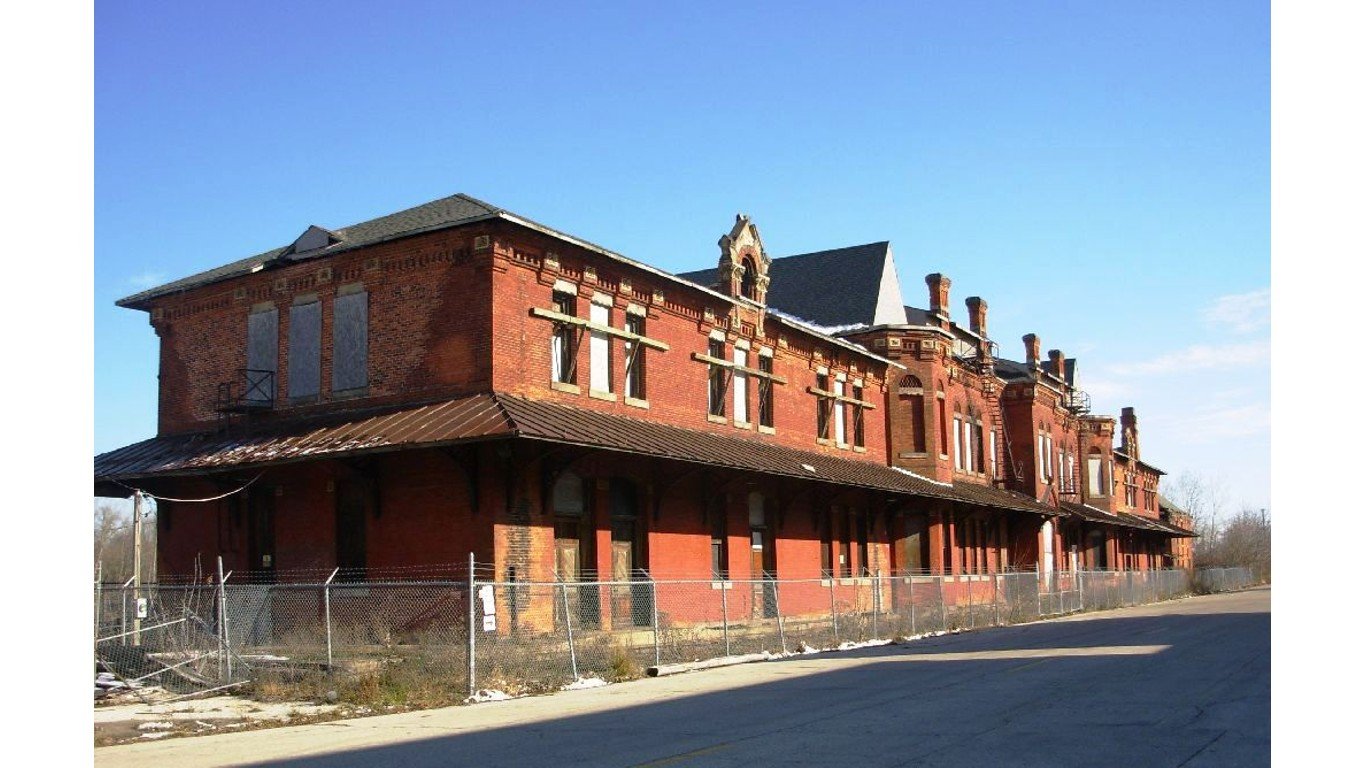
Before Flint experienced the mass exodus due to the ongoing water crisis (another example of deregulation), it was ravaged by General Motors. The company made its manufacturing home in Flint in the 1970s and employed over 80,000 people.
After, General Motors outsourced and downsized its employee count to only 7,200 between 2000 and 2010. The current population of Flint is 78,600, less than the entire labor force of General Motors in the 1970s, and is declining annually by -0.79%. The current poverty rate is 33.3%.
Buffett Missed These Two…
Warren Buffett loves dividend stocks, and has stuffed Berkshire with some of his favorites.
But he overlooked two dividend legends that continue to print checks on a new level, they’re nowhere in his portfolio.
Unlock the two dividend legends Buffett missed in this new free report.
Thank you for reading! Have some feedback for us?
Contact the 24/7 Wall St. editorial team.


